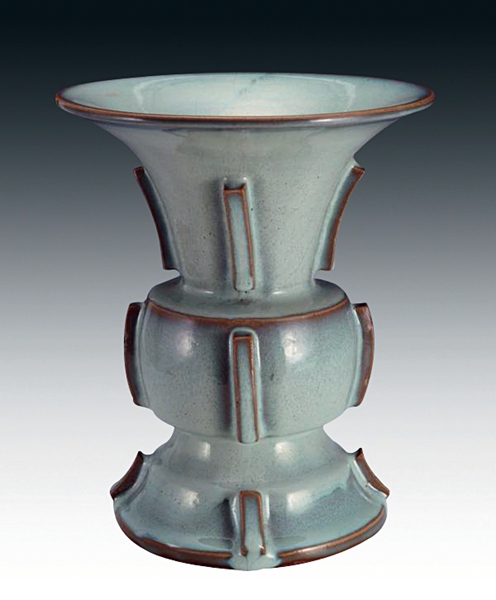The Dazzling Jun Porcelain
China Today ,January 15, 2018 Adjust font size:
Bluish white-glazed Jun porcelain Chuji Zun of Song Dynasty:
Collected by Shanghai Museum, the porcelain Zun (a wine vessel used in ancient China) features a protruding square ridge (called chuji in ancient Chinese) in four directions. From Shang (c. 1600 – c. 1100 BC) to early Northern Song, Zun had been made of bronze, as the wine vessel in a royal worship ceremony. When it came to the reign of Emperor Huizong, porcelain Zun started to replace bronze Zun.
The glaze transmutation in firing Jun porcelain wares is associated with their specific craftsmanship. Special mineral materials of different colors are used in Jun porcelain making, containing multiple trace elements. In fact, lots of factors can influence the color change in firing porcelain products, for example different textures and shapes of wares and thickness of glaze. Very tiny changes in the production process can affect the final color. Even a ware’s position in a kiln during firing, the density of wares in the kiln, and fuel used all play their parts in creating the porcelain’s unique colors.
Another distinctive feature of Jun porcelain works is their “earthworm marks.” Usually Jun porcelain wares are covered with thick and sticky glaze. During cooling, some sunken parts of the surface, which are filled with glaze, will show marks like the ones left by an earthworm on the ground after a rain. These are the representative feature of Jun porcelain.
